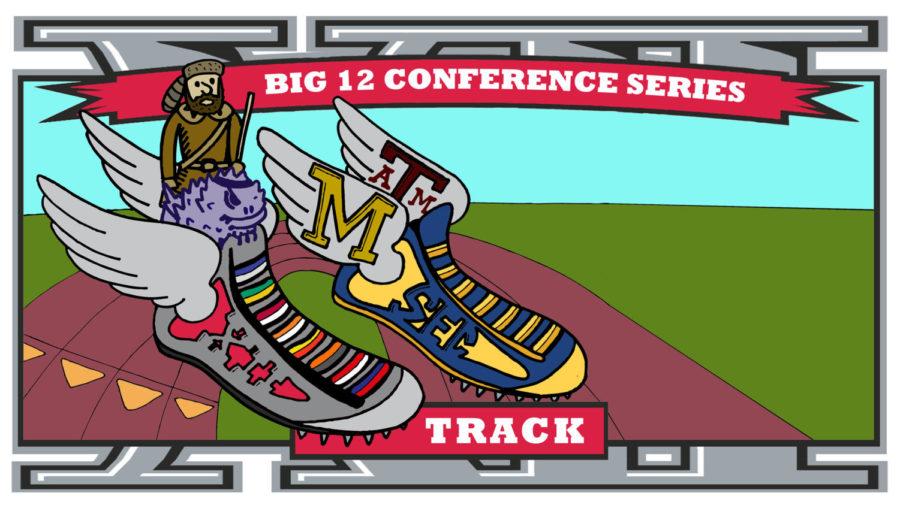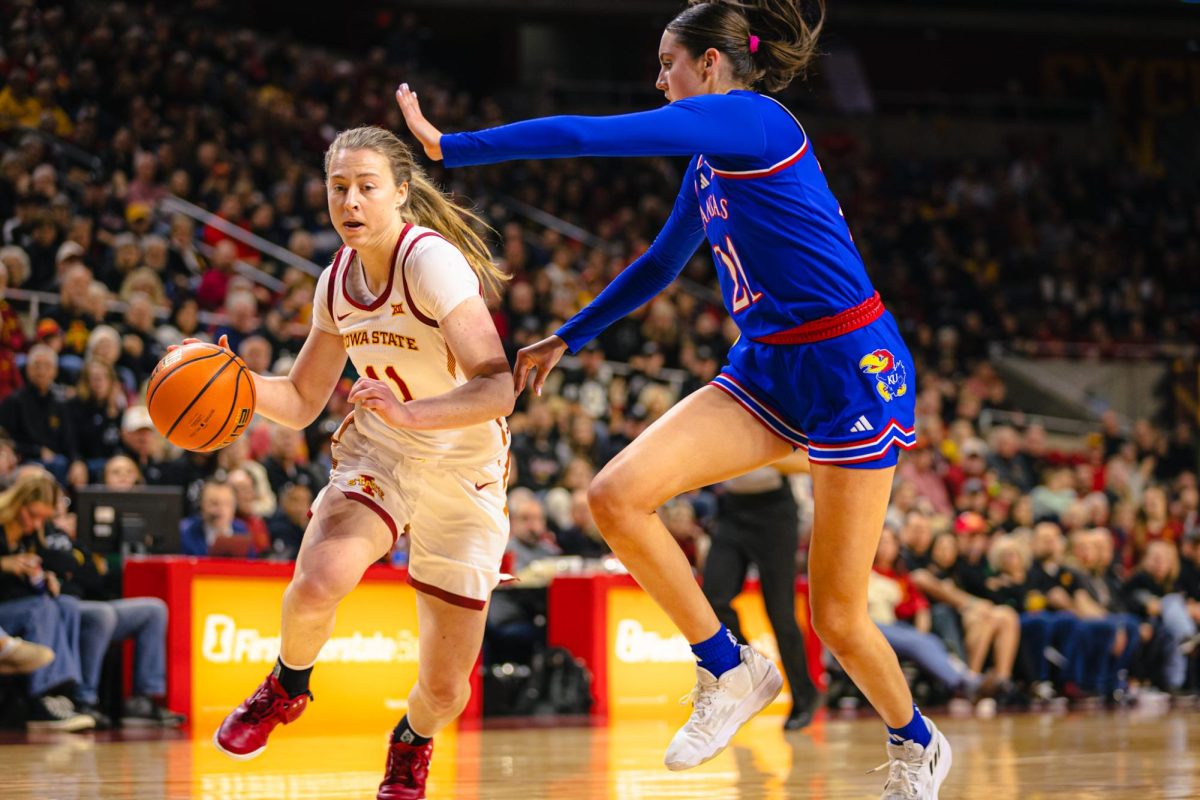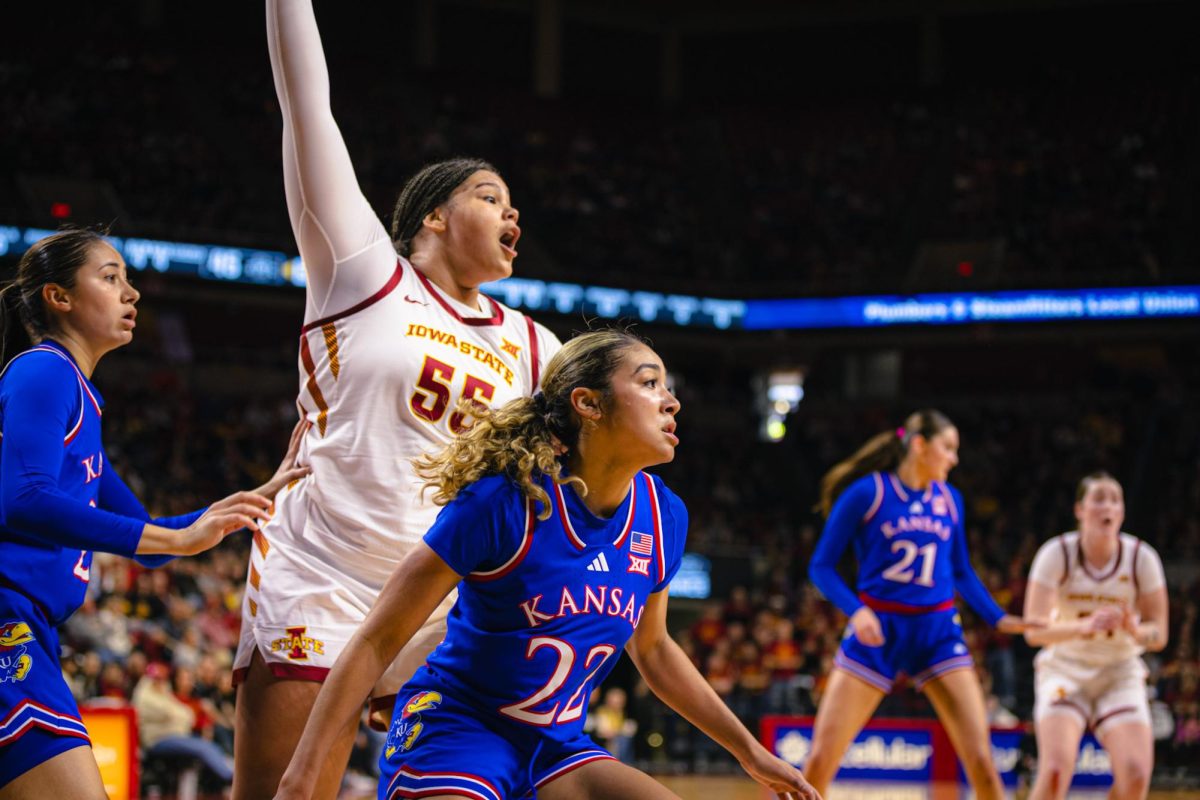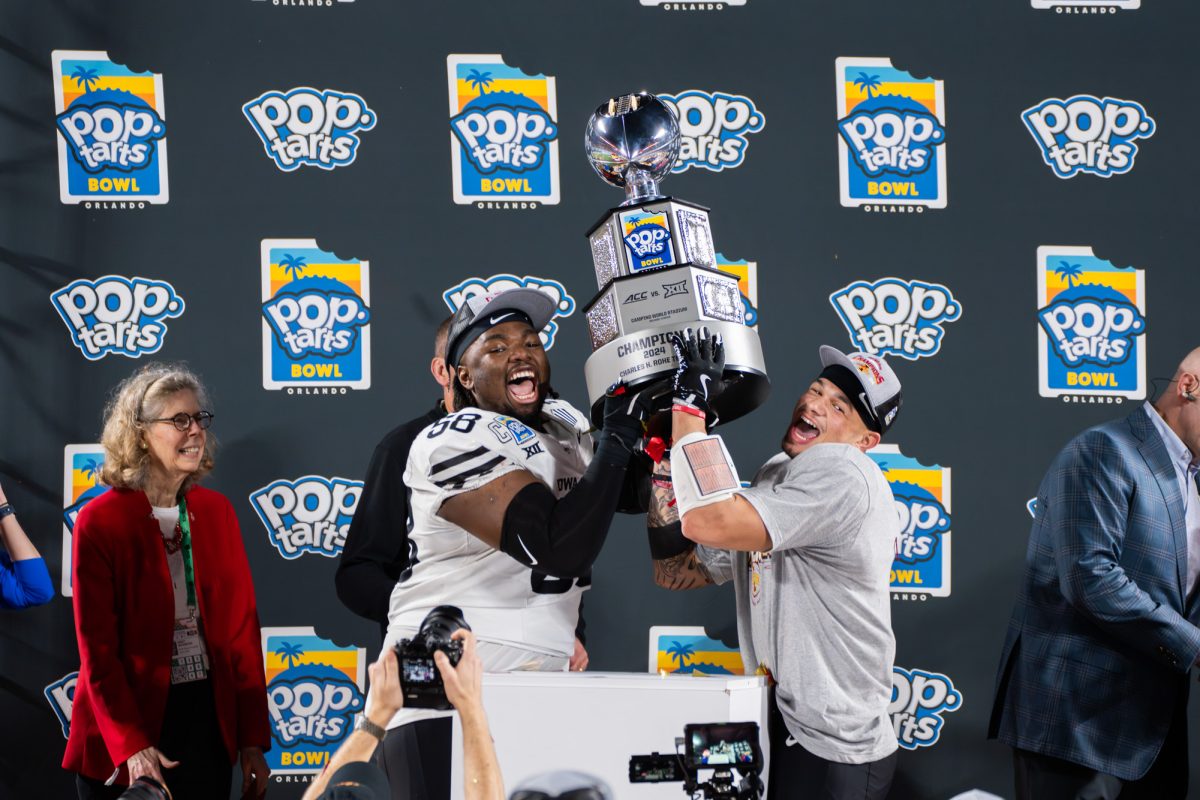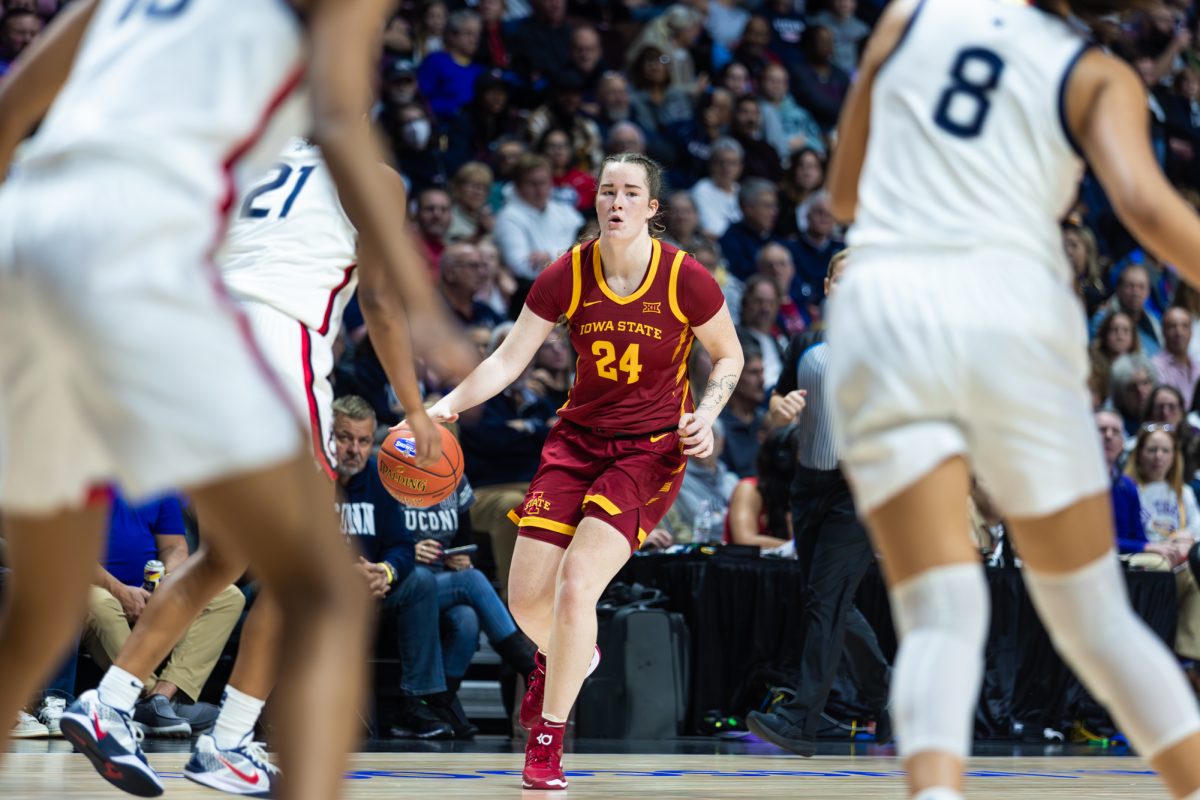Big 12 Series: Track and field looks to future of conference
Track and field faces new challenges with introduction of new rivals in the Big 12 conference.
April 4, 2012
The 2010-11 athletic season was the last time the Big 12 was actually that: 12 individual teams divided into two divisions competing for one conference title.
That was then.
Departure of Nebraska and Colorado
The rivalries between Nebraska and Colorado were soon to be forgotten as the two schools parted ways to other conferences. And the departure of the two schools not only had a lasting effect on the football and basketball programs, but the track program at Iowa State as well.
“I’m probably a little bit of a traditionalist and old school in the sense that, being an athlete here and being here as the Big Eight, to have two schools that were in the Big Eight leave, it’s like anything else: It’s disappointing,” said ISU coach Corey Ihmels.
Ihmels said having two schools leave, which were there since the beginning, was hard to imagine. However, he agreed with the schools’ decision to leave based on what was best for their future.
“I was not unlike anybody else who was here at Iowa State and was just concerned about what the future was going to be for us and what was going to happen to the Big 12,” Ihmels said.
Talk of the Big 12 collapsing started brewing in the media as rumors began about where schools would end up. This caught ISU senior sprinter Ian Warner’s attention.
“But then when they were talking about the Big 12 folding up, and we were the only school that didn’t have a place to go, then I thought that that [was unfair],” Warner said. “We went from being one of the best track conferences to just our whole conference [dismantling].”
One year later: Missouri and Texas A&M leave
The Big 12 had been reduced down to 10 teams for the 2011-12 athletic season. With conference realignment being “all the rage” during the past three years, the Big 12 found itself saying goodbye to Missouri and Texas A&M at the end of the year.
The withdrawal of two more schools left the Big 12 with only eight teams for the first time since 1996, its last year as the Big Eight.
Texas A&M, which will be leaving for the Southeastern Conference, has been the team to beat in the Big 12. The men and women both have won the national title the past three straight years.
“Texas A&M is a great track program,” said Calli Sanders, senior associate athletic director in sports administration. “But, West Virginia and TCU have similar strengths and I don’t think it’s better or worse, I just think it’s different, and I think it just depends on the sport.”
In the grand scheme of things, athletes and coaches alike want what is best for their team and what is best for the conference. Coaches found it hard to agree with so many departures, such as Texas A&M, in the track aspect.
“What makes our conference so good is Texas A&M winning the national championship the last three years,” Warner said. “They’re the best track program so to lose them… Plus Missouri is another solid program, so to lose those two and Nebraska and Colorado, then it started to hit hard.”
The Big 12 welcomes TCU and West Virginia
With the arrival of Texas Christian University and West Virginia, the Big 12 is able to remain at 10 teams in the conference for the 2012-13 athletic season.
“The Big 12 Championship is going to look a little bit different and that’s really the significant measuring stick against their peers is at that championship,” Sanders said.
As coaches and athletes talked about, the addition of new schools is an interesting and exciting ordeal to go through. In the months and years to come, the Big 12 will see new challenges from the Horned Frogs and the Mountaineers on the track.
TCU track coach Darryl Anderson said he has prepared his athletes for the tough competition that awaits his team.
“We’re looking forward to whatever challenges are ahead of us as we move into the Big 12,” Anderson said. “It’s a very competitive conference.”
Michael Fragale, assistant athletic director of communications at West Virginia, said going to the Big 12 will require the teams at West Virginia to become more competitive.
“We’re going to have to kick it up a notch,” Fragale said. “We certainly are aware of how good the Big 12 is in all of its sports.”
Changes in recruitment
An instrumental part of collegiate sports is how a team goes about recruiting athletes. With conference realignment underway, West Virginia and TCU will now be looking farther west for recruits.
“Moving to the Big 12 enhances our recruiting efforts,” said TCU athletic director Chris Del Conte. “But we’ve always had a lot to offer prospective student-athletes when it comes to TCU and the city of Fort Worth, Texas.”
Like Del Conte and the Horned Frogs, Fragale said the Mountaineers are going to continue recruiting in their strongholds — where they know they can get recruits — but also expand a little.
“There’s no question, the recruiting is going to have to expand,” Fragale said. “And with that [expansion], it’s going to bring about more of a cost.”
As far as a connection to Iowa State goes, Ihmels said it has always been tough recruiting in the Midwest. He said recruits do not know as much about the Big 12 as they do about other conferences.
“You’re kind of in the middle of Big 10 land,” Ihmels said. “You talk to people from Chicago and they grow up in the Big 10, so it’s kind of tough to recruit those areas. They don’t grow up with [the Big 12].”
At the end of the day, it can be argued that the realignment of conferences is about two things: football and money.
But looking at the bigger picture, track and field is just one of the smaller sports that are equally affected by the readjustment of the Big 12.
It’s going to take time to get used to; it’s all part of the race.


